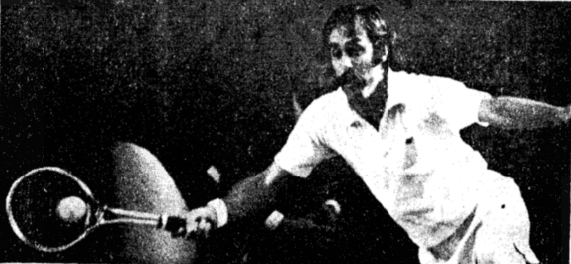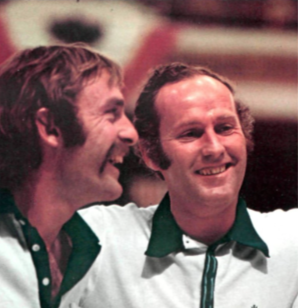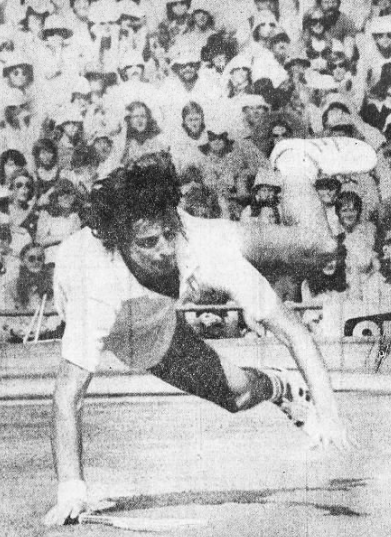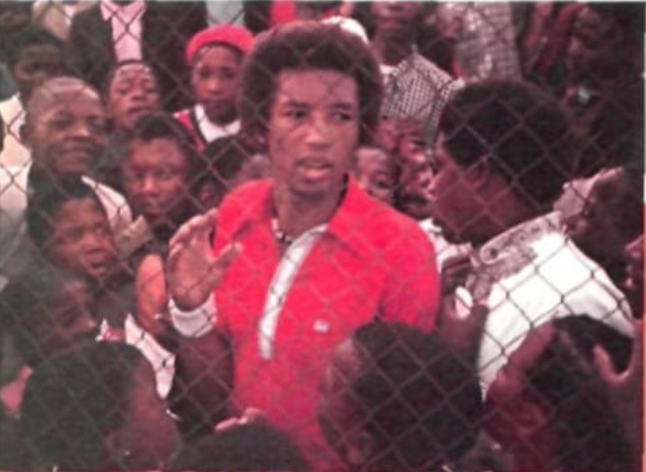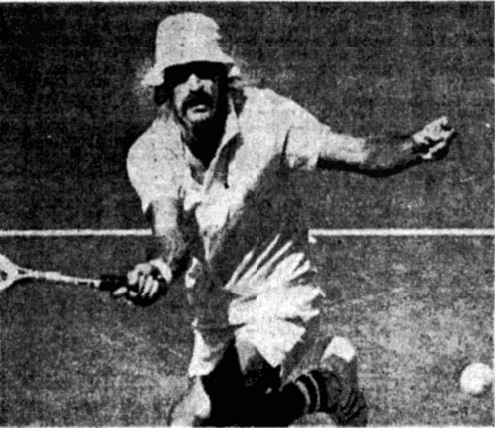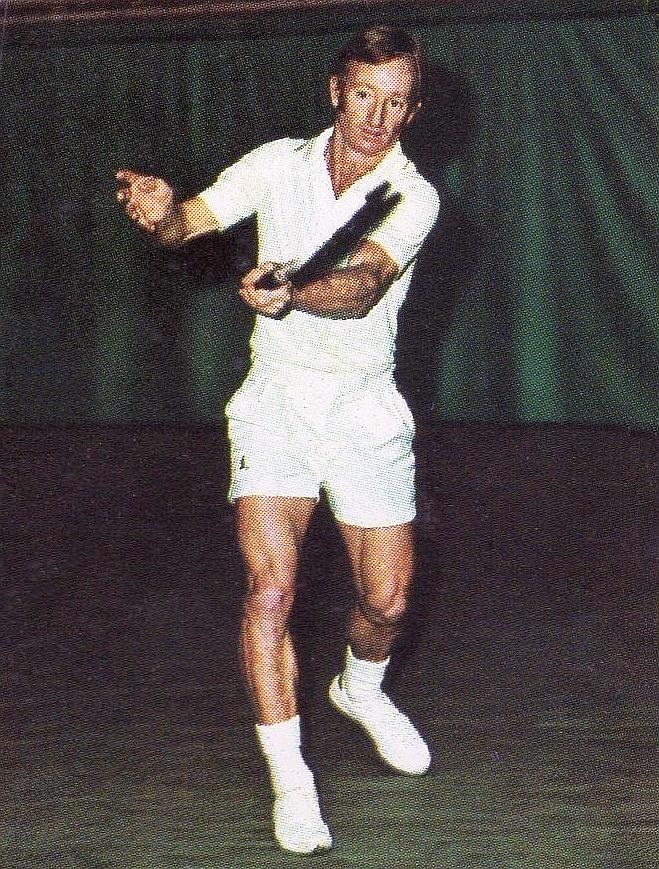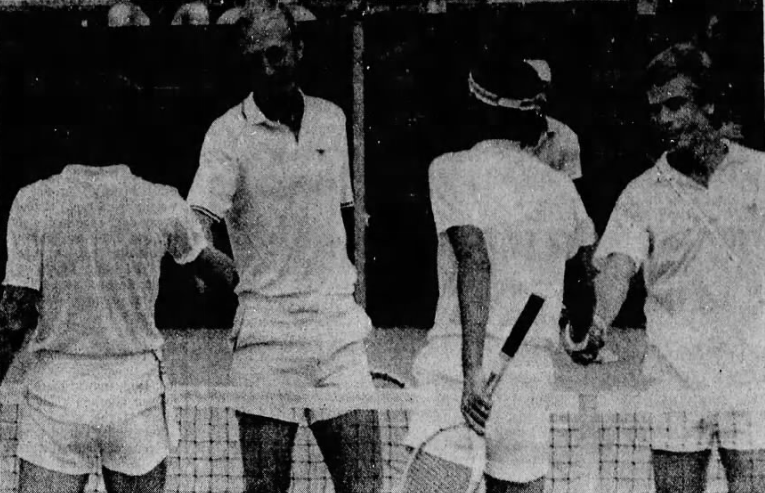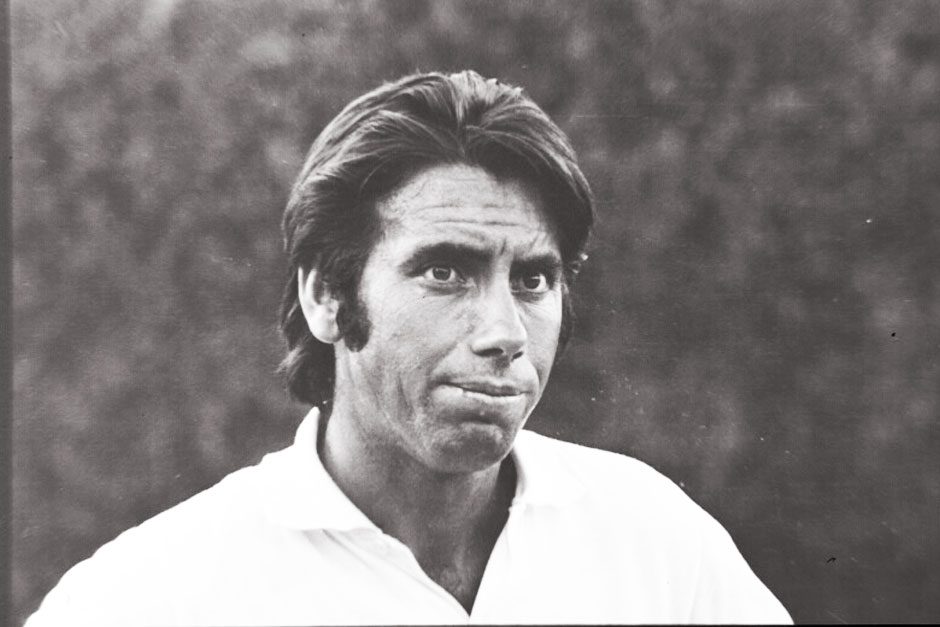Also today: Ugo Humbert in the (Elo) top ten; South American Davis Cup hard courts
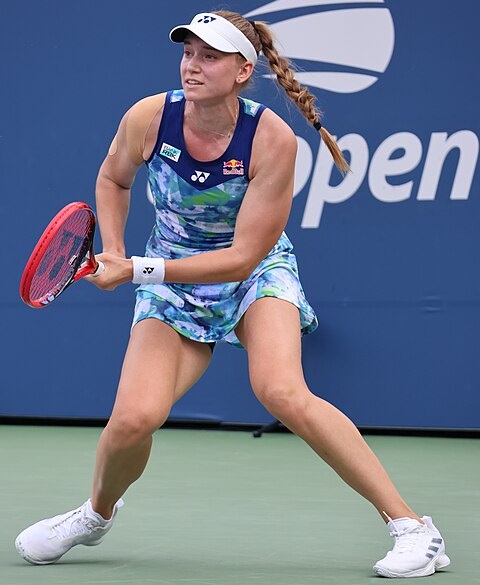
Never underestimate average. Establishing oneself on the top level of the pro tennis circuit is extraordinarily difficult; proving that any particular skill is average among one’s tour-level peers is even harder. Most players are better than the norm in some categories, worse in others. Anyone who can beat the middle of the pack in every department is virtually guaranteed to be a superstar.
Average is Elena Rybakina’s secret weapon. You probably didn’t know she needed one, because she has a very effective, very evident non-secret weapon: an unreadable bullet of a first serve. In the last year, over 43% of her first serves have gone unreturned. No one else on tour comes within three percentage points of that, and only five other women top 35%. On a good day, the serve can put a match out of reach nearly on its own. When she faced Aryna Sabalenka in Beijing last fall, 65% of her first serves didn’t come back. Most women barely manage to win that many first serve points, let alone decide them with one stroke.
I’ll come back to the serve in a moment, because it is so remarkable, and it would be strange to talk about Rybakina without discussing it. But what makes her a contender every week–not to mention a champion in Abu Dhabi yesterday–is the way that the rest of her game doesn’t hold her back. Among the other women who end points with more than 35% of their first serves, you’ll find a long list of weaknesses. Qinwen Zheng doesn’t put nearly enough of them in the box. Donna Vekic and Caroline Garcia struggle to break serve. Liudmila Samsonova doesn’t break much, either, and her mistakes come in excruciating, match-endangering bunches.
Lopsided player profiles make sense. Only a few people have the combination of natural gifts and discipline to develop a dominant serve. Tennis skills are correlated, but not perfectly so. Someone who serves like Vekic can often learn good-enough groundstrokes and secondary shots. But players with one standout skill are unlikely to be solid across the board. Just because someone is top ten in the world in one category, why would we expect them to rank in the top 100 by a different measure?
Rybakina has reached the top–or close, anyway–by coupling a world-class serve with a set of skills that lacks defects. (You can nitpick her footwork or technique, but none of that holds her back when it comes to winning enough points.) After we review the devastation wrought by her serve, we’ll see just how average she otherwise is, and why that wins her so many matches.
First serves first
I’ve already given you the headline number: Since this time last year, 43.4% of Rybakina’s first serves haven’t come back. That’s one percentage point better than Serena Williams’s career rate. Serena’s numbers are based on matches logged by the Match Charting Project, a non-random sample skewed toward high-profile contests against strong opponents, so I’m not ready to say outright that Rybakina is serving better than Serena. But I’m not not saying that–we’re within the margin of error.
Some back-of-the-envelope math shows what kind of gains a player can reap from the best first serve in the game. Rybakina makes about 60% of her first serves–lower than average, but probably worth the trade-off. (And improving–we’ll talk about that in a bit.) When the serve does come back, she wins about half of points, roughly typical for tour players. All told, 43% of her serve points are first-serve points won. Tack on about half of her second serve points–she wins 48% of those, better than average but not by a wide margin–and we end up with her win rate of 62.5% of serve points–fourth-best on tour.
Put another way: We combine one world-class number (unreturned first serves) with a below-average figure (first serves in), one average number (success rate when the serve come back), and one more that was slightly better than average (second-serve points won). The result is an overall success rate that trails only those of Iga Swiatek, Sabalenka, and Garcia. That, in case you ever doubted the value of an untouchable first serve, is the impact of one very good number.
The key to Rybakina’s first serve–apart from blinding speed–is its unreadability. She must lead the tour in fewest returner steps per ace, a stat I dreamed up while watching the Abu Dhabi semi-final on Saturday. Samsonova seemed to stand bolted to the ground, watching one serve after another dart past her. After one business-as-usual ace out wide, Samsonova even offered a little racket-clap of appreciation, an unusual gesture for such a routine occurrence.
In addition to the deceptiveness of a nearly identical toss and service motion, Rybakina is effective in every direction. There’s no way for an opponent to cheat to one side, hoping to get an edge on a delivery in that corner of the box. Here are Elena’s rates of unreturned first serves and total points won in each corner of the two service boxes:
Direction Unret% Won% Deuce-Wide 36% 69% Deuce-T 45% 75% Ad-T 37% 70% Ad-Wide 42% 74%
The average player ends points with their first serve between 20% and 25% of the time and wins 60% of their first serve points. Rybakina obliterates those numbers in every direction. If there’s a strategy to be exploited, it’s that returners ought to lean toward their forehand, because if the serve comes to their backhand, they don’t have a chance anyway.
The scariest thing for the rest of the tour is that the 24-year-old’s biggest weapon may be getting even bigger. Her 43.4% rate of unreturned first serves in the last 52 weeks compares favorably to a career clip of 38.2%. Against Samsonova on Saturday, over 41% of all serves didn’t come back, better than Rybakina managed in any of their four previous meetings.
She may be getting savvier, too. One of the dangers of a game built around a single weapon is that certain players might be able to neutralize it. Daria Kasatkina, Elena’s opponent in yesterday’s final, is just such an opponent, a resourceful defender and a first-class mover. When the two women played a three-and-a-half-hour epic in Montreal last summer, Kasatkina put three-quarters of first serves back in play, something that few women on tour could manage and one of the main reasons the match stretched so long. Rybakina survived, but she was broken ten times.
Yesterday, Kasatkina was as pesky as ever, getting almost as many balls back as she did in Montreal. But Rybakina took fewer chances with her first strike, perhaps as much to counter the wind as to adjust for her opponent. Whatever the reason, Elena made three-quarters of her first serves. She had never landed more than 61% against Kasatkina.
The Abu Dhabi final was an exaggerated example of a longer-term trend. Somehow, Rybakina is making way more first serves than ever before, sacrificing no aces and only a fraction of first-serve points won. The overall results speak for themselves:
Year 1stIn% 1st W% Ace% SPW% 2024 66.8% 70.9% 10.3% 64.8% 2023 56.8% 73.6% 10.5% 62.8% Career 57.8% 71.1% 8.4% 62.0%
It’s not a perfect comparison, because the entire 2024 season so far has been on hard courts. Her season stats will probably come down. But a ten-percentage-point increase in first serves in? Nobody does that. Kasatkina won just five games yesterday, and she won’t be the last opponent to discover that whatever edge she once had against Rybakina is gone.
Average ballast
As Ivo Karlovic can tell you, the best service in the world can take you only so far. Some first serves will go astray, some serves will come back, and then there’s the whole return game to contend with. Women’s tennis rarely features characters quite as one-sided as Ivo, but Vekic and Garcia illustrate the point, struggling to string together victories because their serves alone are not enough.
Here’s a quick overview of how the rest of Rybakina’s game stacks up against the average top-50 player over the last 52 weeks:
Stat Top-50 Elena 2nd W% 46.7% 48.4% DF% 5.2% 3.9% RPW 44.4% 44.2% Break% 35.5% 36.9% BPConv% 46.6% 43.5%
She’s somewhat better than average behind her second serve, as you’d expect from someone with such a dominant first serve. It’s aided by fewer double faults than the norm. On return, we have two separate stories. Taking all return points as a whole, Rybakina is almost exactly average, matching the likes of Barbora Krejcikova and Marta Kostyuk. The only category where she trails the majority of the pack is in break point conversions–and by extension, breaks of serve.
The discrepancy between Rybakina’s results on break points and on return points in general may just be a temporary blip. Most players win more break points than their typical return performance, because break points are more likely to arise against weaker servers. That hasn’t been the case for Elena in the last 52 weeks, and it wasn’t in 2022, either, when she won 41.9% of return points that year but converted only 40.5% of break opportunities.
Match Charting Project data indicates that she is slightly more effective returning in the deuce court than the ad court; since most break points are in the ad court, that could explain a bit of the gap. Charting data also suggests she is a bit more conservative on break point, scoring fewer winners and forced errors than her normal rate, though not fewer than the typical tour player. It may be that Rybakina will always modestly underperform on break opportunities, but it would be unusual for a player to sustain such a large gap.
In any case, she hasn’t struggled in that department in 2024. In 13 matches, she has won 46.9% of return points overall and 47.3% of break points. It’s dangerous to extrapolate too much from a small sample, especially on her preferred surface, but it may be that Rybakina’s single weak point is already back to the top-50 norm of her overall return performance.
The value of all this average is this: What Rybakina takes with her first serve, she doesn’t give back with the rest of her game. We’ve already seen how a standout rate of unreturned first serves–plus a bunch of average-level support from her second serve and ground game–translates into elite overall results on serve. A tour-average return game generates about four breaks per match. Elena has been closer to 3.5, but either way, that’s more than enough when coupled with such a steady performance on the other side of the ball.
I can’t help but think of Rybakina’s “other” skills as analogous to the supporting cast in team sports. Her first serve is an all-star quarterback or big-hitting shortstop; the rest of her game is equivalent to the roster around them. In baseball, a league-average player is worth eight figures a year. Though Elena’s return, for instance, doesn’t cash in to quite the same degree, it is critical in the same way. A superstar baseball player can easily end up on a losing team, just as Caroline Garcia can drop out of the top 50 despite her serve. Rybakina is at no risk of that.
A final striking attribute of Rybakina’s game is that her array of tour-average skills can neutralize such a range of opponents. Her weekend in Abu Dhabi was a perfect illustration, as she overcame Samsonova and Kasatkina, two very different opponents, each of whom has bedeviled her in the past. Elena is more aggressive than the average player, but she is considerably more careful than Samsonova; her Rally Aggression Score is equivalent to Swiatek’s. She was able to take advantage of the Russian’s rough patches without losing her own rhythm or coughing up too many errors of her own.
Against Kasatkina, she posted the most unexpected “average” stat of all. In a matchup of power against defense, defense should improve its odds as the rallies get longer. On Sunday, the two women played 15 points of ten strokes or more, and Rybakina won 8 of them. In her career, Elena has won 52% of those points–probably more by wearing down opponents with down-the-middle howitzers than any kind of clever point construction, but effective regardless of the means.
Rybakina won’t beat you at your own game. But she’ll play it pretty well. Combined with the best first serve in women’s tennis, drawing even on the rest is a near-guarantee of victory. Abu Dhabi marked her seventh tour-level title, and it will be far from her last.
* * *
Ugo Humbert, Elo top-tenner
You probably don’t think of Ugo Humbert as a top-ten player, if you think of him at all. The 25-year-old left-hander cracked the ATP top 20 only a few months ago, and his title last week in Marseille gave him a modest boost to #18.
Elo is much more positive about the Frenchman. Today’s new Elo rankings place him 9th overall, just behind Hubert Hurkacz, the man he defeated to reach the Marseille final. Humbert has always been dangerous against the best, with a 22-25 career record facing the top 20, and a 10-12 mark against the top ten.
Humbert’s place in the Elo top ten might feel like a fluke; there’s a tightly-packed group between Hurkacz at #8 and Holger Rune at #13, and an early loss in Rotterdam could knock the Frenchman back out of the club. But historically, if a player reaches the Elo top ten, a spot in the official ATP top ten is likely in the offing.
I wrote about this relationship back in 2018, after Daniil Medvedev won in Tokyo. As his ATP ranking rose to #22, he leapt to #8 on the Elo list. In retrospect, it’s odd to think that “Daniil Medvedev will one day crack the top ten” was a big call, and it wasn’t that far-fetched: Plenty of people would’ve concurred with Elo on that one. He made it, of course, officially joining the elite the following July.
In that post, I called Elo a “leading indicator,” since most players reach the Elo top ten before the ATP computer renders the same judgment. This makes sense: Elo attempts to measure a player’s level right now, while the ATP formula generates an average of performances over the last 52 weeks. That’s a better estimate of how the player was doing six months ago. Indeed, for those players who cracked both top tens, Elo got there, on average, 32 weeks sooner. In Medvedev’s case, it was 40 weeks.
Most importantly for Humbert, Elo is almost always right. In October 2018, I identified just 19 players who had reached the Elo top ten but not the ATP top ten. Three of those–Medvedev, Stefanos Tsitsipas, and Roberto Bautista Agut–have since taken themselves off the list. One more has come along in the meantime: Sebastian Korda joined the Elo top ten in early 2023, but his ATP points total has yet to merit the same ranking.
Most of the Elo-but-not-ATP top-tenners had very brief stays among the Elo elite: Robby Ginepri qualified for just one week. The only exception is Nick Kyrgios, who spent more than a year in the Elo top ten, thanks to his handful of victories over the best players in the game. His upsets earned him plenty of notoriety, but his inability to consistently beat the rest of the field kept his points total deflated.
Humbert, in his much quieter way, fits the same profile. His serve means that he can keep things close against higher-ranked players, but he has struggled to string together enough routine wins to earn more of those chances. (Injuries haven’t helped.) Still, the odds are in his favor. In 32 weeks–give or take a lot of weeks–he could find himself in the ATP top ten.
* * *
Surfaces in South American Davis Cup
It dawned on me about halfway through the deciding rubber of the Chile-Peru Davis Cup qualifying tie: They were playing on a hard court! In South America! Against another South American side!
It made sense for Chile, with big hitters Nicolas Jarry and Alejandro Tabilo leading the team, and they did indeed vanquish the Peruvian visitors. But South America is known as a land of clay courts, the home of the “Golden Swing.” It seemed weird that an all-South American tie would be played on anything else.
As it turns out, it isn’t that unusual. Since the late 1950s, I found 252 Davis Cup ties between South American sides. I don’t have surface for 37 of them, almost all from the 1970s. Presumably most of those were on clay, but since that’s the question I’m trying to answer, I’m not going to assume either way.
That leaves us with 215 known-surface ties, from 1961 to the Chile-Peru meeting last weekend. (I’m excluding the matchup between Argentina and Chile at the 2019 Davis Cup Finals, since neither side had any say in the surface.) To my surprise, 37 of those ties–about one in six–took place on something other than clay. That’s mostly hard courts, but five of them were played on indoor carpet as well.
The country most likely to bust the stereotype has been Venezuela, which preferred hard courts as early as the 1960s. Ecuador also opted to skip clay with some frequency; it accounted for the first appearance of carpet in an all-South American tie back in 1979.
Chile has generally stuck with clay, but not always. The last time they hosted a South American side on another surface was 2000, when they faced Argentina on an indoor hard court. The surface probably wouldn’t have mattered, as Marcelo Rios and Nicolas Massu were heavy favorites against a much weaker Argentinian side. Though they won, the home crowd was so disruptive that the visitors pulled out without playing the doubles. Chile was disqualified from the next round and barred from hosting again until 2002.
The crowd last weekend was typically rowdy, but Jarry and Tabilo advanced without controversy. For some South American sides, hosting on hard courts may finally become the rule, not the exception.
* * *
Subscribe to the blog to receive each new post by email:
